Earlier this month, Claudia and I spent about two weeks on the Olympic Peninsula in Washington. Part of that time I was co-leading a workshop for Visionary Wild with Jerry Dodrill, which was super fun. We had a great, lively group of people, and beautiful conditions, with lots of fall color, and a gorgeous sunset on the beach.
This was our second trip to the Olympic Peninsula this year, and we loved both visits. There’s something about temperate rain forests that seems to strike a chord with me, whether on the Olympic Peninsula, in the redwoods, or on the west coast of New Zealand.
The Olympic rain forests are known for their hanging “mosses.” (They’re actually lichens, but everyone calls them mosses.) Some large, old branches, especially on big-leaf maples, host curtains of lichen that hang down three feet or more.
I usually prefer soft light for forest scenes, but our visit to the Olympic Peninsula in May coincided with a stretch of sunny weather, and we found that those hanging lichens looked great backlit in the early morning or late afternoon. The lichens are translucent, and glowed beautifully with the sun shining through from behind.
We encountered more typical northwestern weather on our October trip, with some rain, and lots of overcast skies. But that soft light worked really well with the fall color. I think soft light is always a great complement to colorful subjects, emphasizing color and color contrasts, rather than light-and-dark contrast.
And yes, we saw lots of fall color. People don’t typically think of the Olympic Peninsula as a fall-color hotspot, but we found plenty of color, mostly from vine maples and big-leaf maples. While no one is going to mistake autumn in Washington for New England, I loved finding splashes of color among moss- and lichen-draped old-growth trees, or lining one of the numerous rivers or creeks. The vine maples seemed to be having a good year, with lots of red leaves. The big-leaf maples turn yellow, but their huge, lichen-draped branches always add a great touch to any of these forest scenes. It was all a lot of fun to photograph.
Of course forests are chaotic environments, so it can be challenging to find clean, simple compositions amidst all that clutter. But the splashes of color helped, sometimes providing clear visual focal points that I could build a composition around. I think there are two keys to simplifying complex scenes: patterns and focal points. Patterns help give the image order, cohesion, and rhythm, which help with any photograph, but especially when things get cluttered and complicated. And I think nearly every image needs a visual focal point – one prominent spot for the viewer’s eye to latch onto first – but that’s even more important with complex scenes, giving the viewer a visual anchor amidst the chaos.
I made a lot of photographs during this recent trip, so in this post I’m including just some of my favorite fall-color images. That’s still a lot, so I’m actually going to split this into two posts, and you’ll see more of my favorites Olympic fall-color photos soon. And then there are ocean scenes, and others, so I plan to post those as well…
As you look through these, see if you can identify patterns and focal points. Not every photograph has both, but most do, and all have at least one or the other. (And some have more than one pattern, or more than one focal point.) If a focal point isn’t immediately obvious, ask yourself what part of the photo most catches your eye, or what area your eye keeps returning to. And a pattern could be any kind of repeating element – similar lines or shapes that echo each other.
Fall is one of my favorite seasons for photography, and it was fun to spend some of it on the Olympic Peninsula, with autumn scenes that were a bit different than anything I’d photographed before. I hope we can go back some day. And in the meantime, fall is still going strong in many places near our home, so I’m keeping busy…
— Michael Frye
Related Posts: Simplifying Forest Scenes; Photographing the Olympic Peninsula
Michael Frye is a professional photographer specializing in landscapes and nature. He is the author or principal photographer of The Photographer’s Guide to Yosemite, Yosemite Meditations, Yosemite Meditations for Women, Yosemite Meditations for Adventurers, and Digital Landscape Photography: In the Footsteps of Ansel Adams and the Great Masters. He has also written three eBooks: Light & Land: Landscapes in the Digital Darkroom, Exposure for Outdoor Photography, and Landscapes in Lightroom: The Essential Step-by-Step Guide. Michael has written numerous magazine articles on the art and technique of photography, and his images have been published in over thirty countries around the world. Michael has lived either in or near Yosemite National Park since 1983, currently residing just outside the park in Mariposa, California.

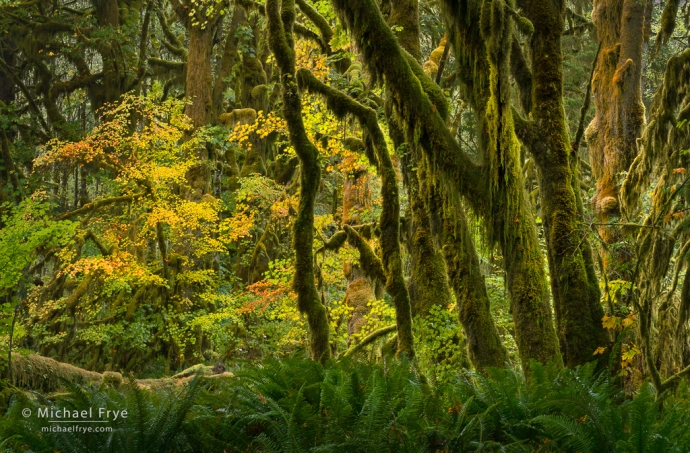
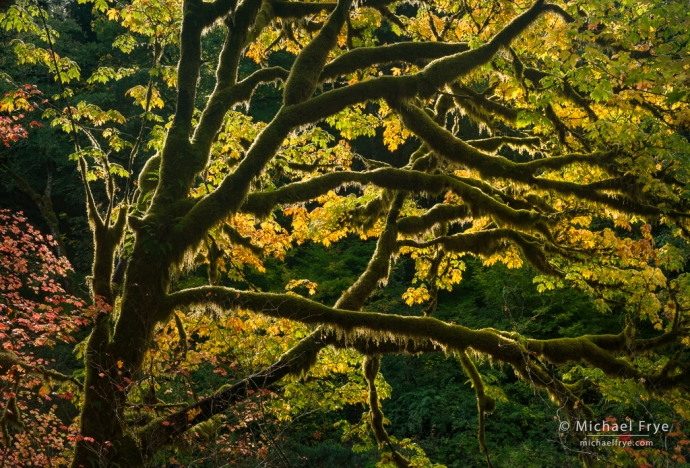
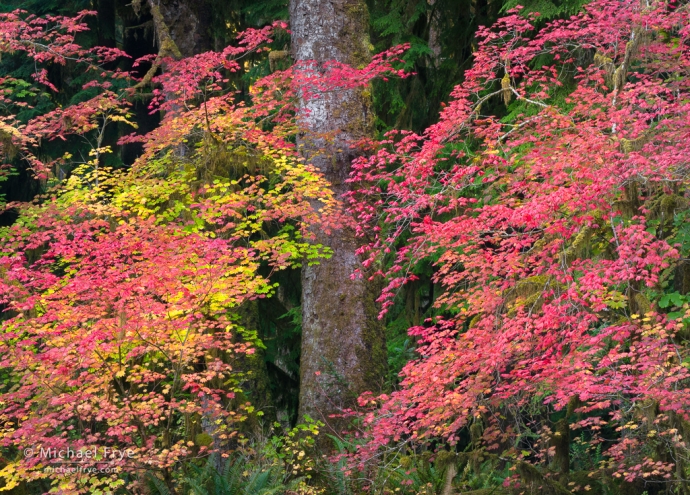
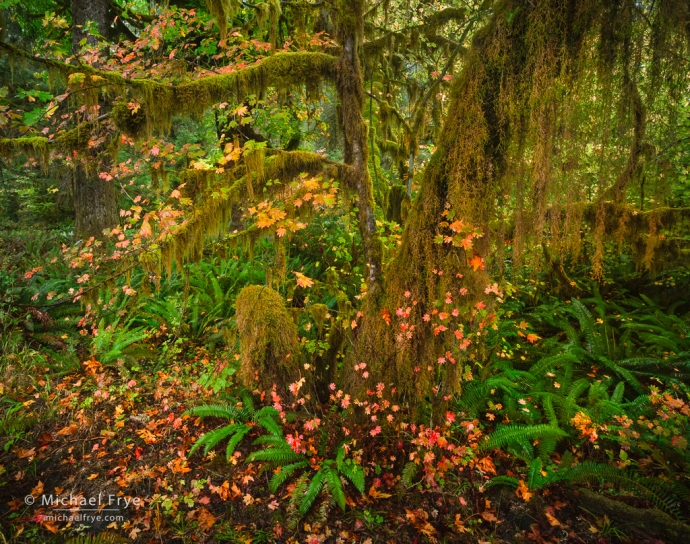
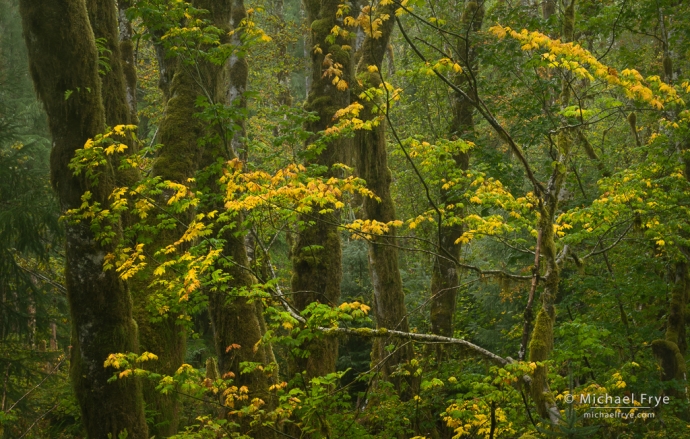
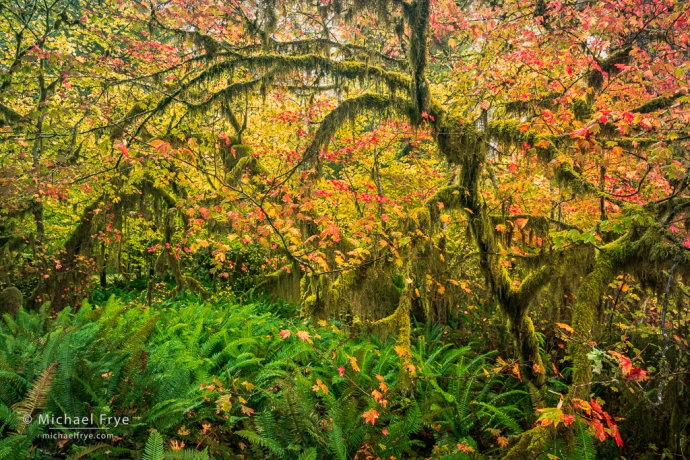
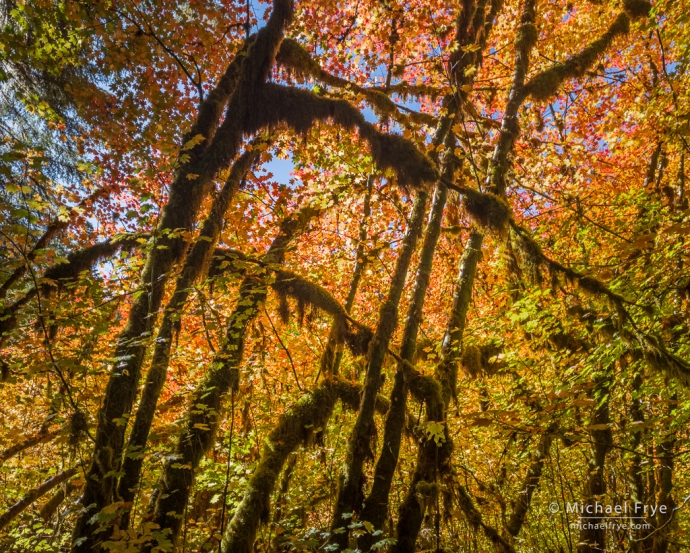
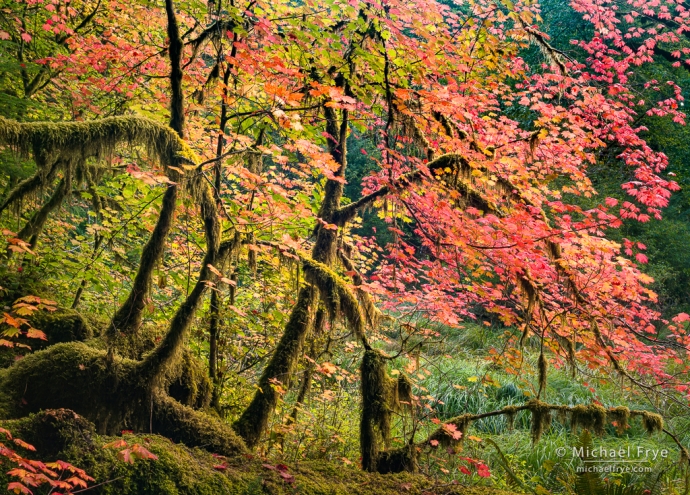
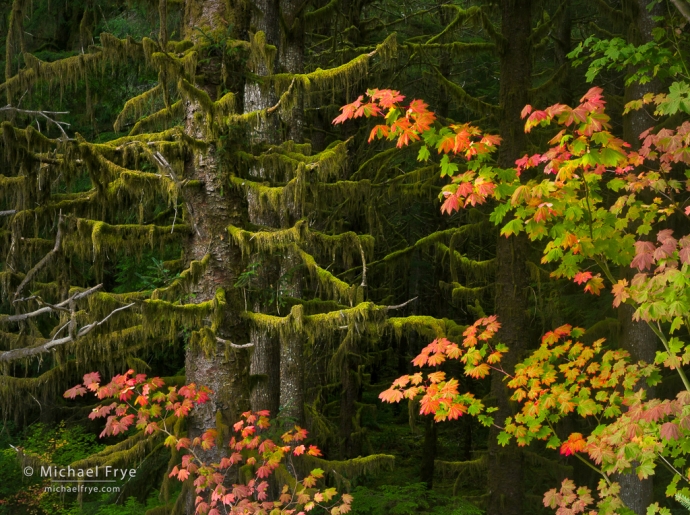
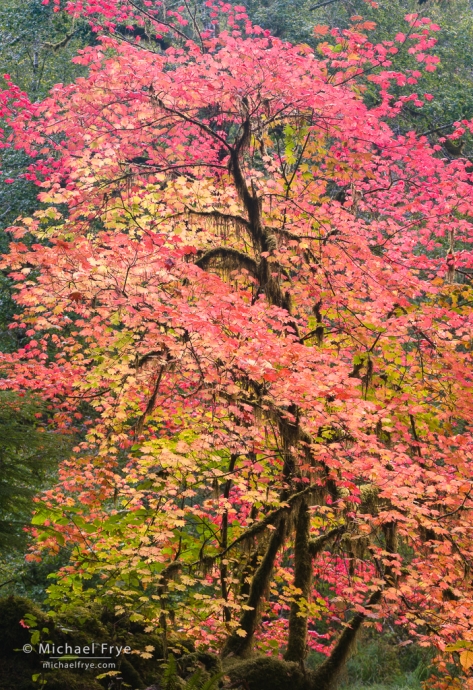
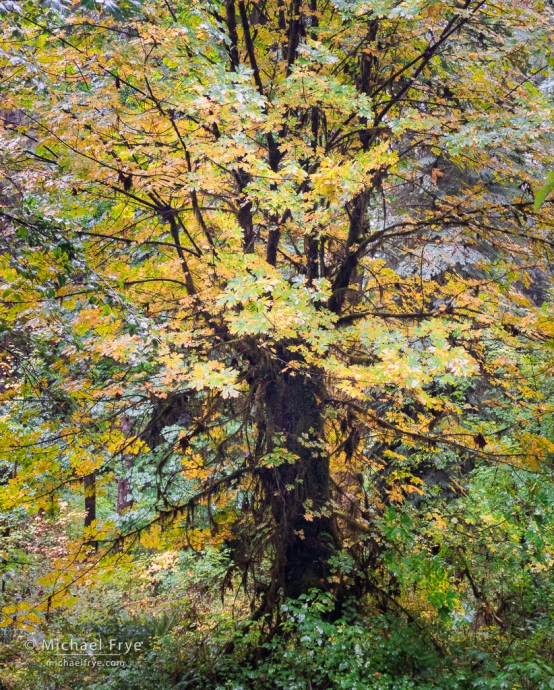
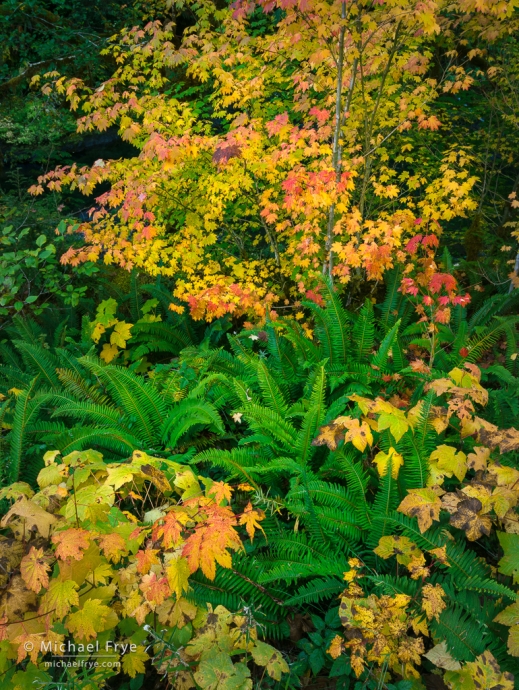








Try going even later in October sometime..the dense forest becomes more “visible” in a sense with surprising colors. And usually rain:) Nice images as always.
Yeah, I’d like to try a little later. The color was prime in some of the northern areas, but further south we were a little early.
These are the most beautiful images!! Again…so sensitive and beautiful from Michael and Claudia!!
Such beautiful color and comps!!